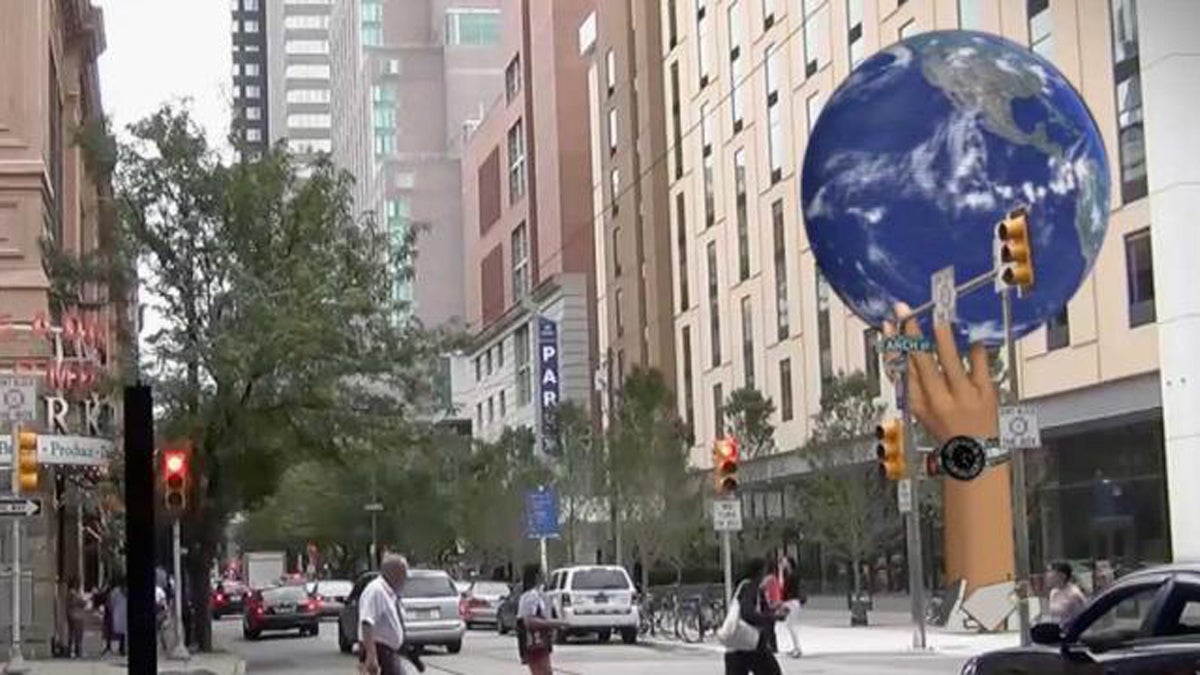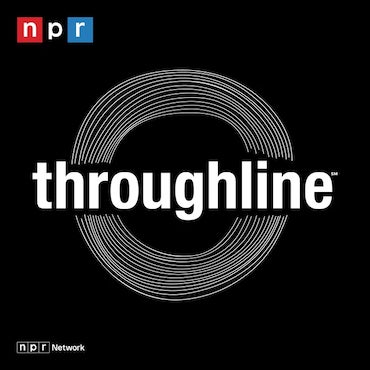Digital displays destined for Center City as Nutter acquiesces
Listen
Hybrid form of interactive electronic LED advertising platform, known as an urban experiential display or UED.(Rendering via PlanPhilly)
Two three-dimensional digital billboards are officially on their way to Center City now that Mayor Michael Nutter has decided not to veto a measure allowing the controversial displays.
What exactly the signs will look like, how big they’ll be, and what kind of advertising they’ll feature remain unknown. But barring an unexpected setback, by the end of this year, the two large digital displays will be installed near the Pennsylvania Convention Center and the Reading Terminal Market.
The digital signs — known in the industry as “urban experiential displays” or UEDs — face a few more regulatory hurdles before they can become reality. City officials will have a chance to weigh in on the size and aesthetics of the displays themselves, as well as the safety issues that arise from having potentially distracting displays near roadways, said Councilman Mark Squilla, who has championed the displays.
“The Planning Commission gets to review [each] UED and come up with suggestions to make it better, how it fits as far as scale, go back and forth with the developer until they find a place they’re comfortable with,” Squilla said. “Those will be given to the Art Commission for final approval.”
Either the Streets Department or PennDOT also will conduct safety reviews, Squilla said, depending on which agency has jurisdiction over the roadways affected by the final design.
But if the city has some say in the structures themselves, it will have little input into the content of the ads they display once up and running. That content will be guided by the same rules that apply to traditional billboards, Squilla said, meaning that almost any sort of advertising could appear, from casinos to strip clubs to laundry detergent.
“They really can’t control the content — you’re probably going to see a lot of casino ads,” said Mary Tracy, head of the nonprofit advocate group Scenic Philadelphia. Anything you see on a billboard by a highway, you could see on these UEDs, she said. “You can’t have naked people — but you can have almost-naked people.”
Squilla said that if the billboard owners were asked to sell space to controversial advertisers, they’d face the same First Amendment issues that SEPTA had to deal with when a political group wanted to put ads on buses comparing Muslims to Nazis.
In that case, a court challenge on free-speech grounds ended up forcing SEPTA to run the ads. The owners of the new digital displays could always decline to run controversial ads, Squilla said, as long as they were prepared to defend that decision in court .
Tracy believes that the digital display decision opens a “Pandora’s box” for a city that has long banned traditional outdoor billboards in Center City. “I’d hoped the mayor would veto this.”
She said the mayor’s requested changes looked like they improved the bill in the end, but she thinks it still falls short on oversight, most notably by giving the Art Commission — not the Planning Commission — the final word on the size and overall design of the displays.
“The Planning Commission still doesn’t have final say. It’s the Planning Commission that has teeth, because they’re involved in land use,” Tracy said. “Instead it’s the Art Commission — and because their decisions are about how things look, about aesthetics, and it’s very easy [for opponents] to argue that those kinds of decisions are arbitrary,” and overturn them in court, she said.
“They’ve set up a situation where no one can say no,” Tracy said.
Squilla believes concerns such as Tracy’s can be addressed once the signs are in use.
“This is something new. Once we get it up and running, we’ll see the good things that were proposed, and maybe some of the bad things that come out of it. There’s always unintended consequences to something that’s new,” he said.
The displays were opposed by some downtown residents, including the Center City Residents’ Association. They also won the strong support of the nonprofits who’ll benefit financially by receiving a share of their revenue, including the Reading Terminal and the Convention Center.
And while some, including Tracy, had hoped for a veto from Nutter, in the end, the mayor chose to allow the bill approving the signs to become law in exchange for some “tweaks” to aspects of the approval and revenue-sharing procedures, as well as the process of safety reviews by the Streets Department and PennDOT.
Those changes will have to be aired out in a hearing in Council’s rules committee, and approved by another Council vote, which Squilla believes will happen within the next few months. Any additional signs would have to be approved by City Council.
WHYY is your source for fact-based, in-depth journalism and information. As a nonprofit organization, we rely on financial support from readers like you. Please give today.




